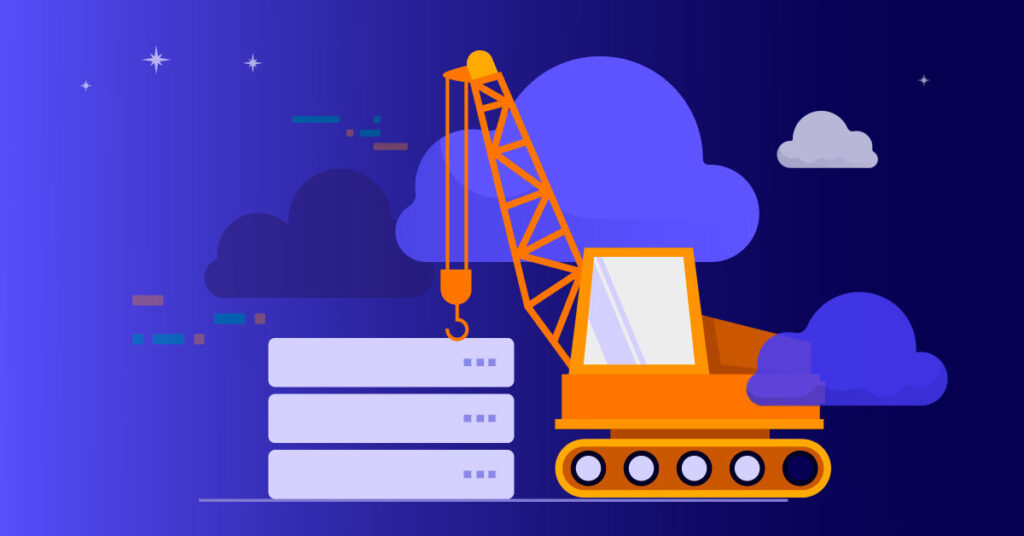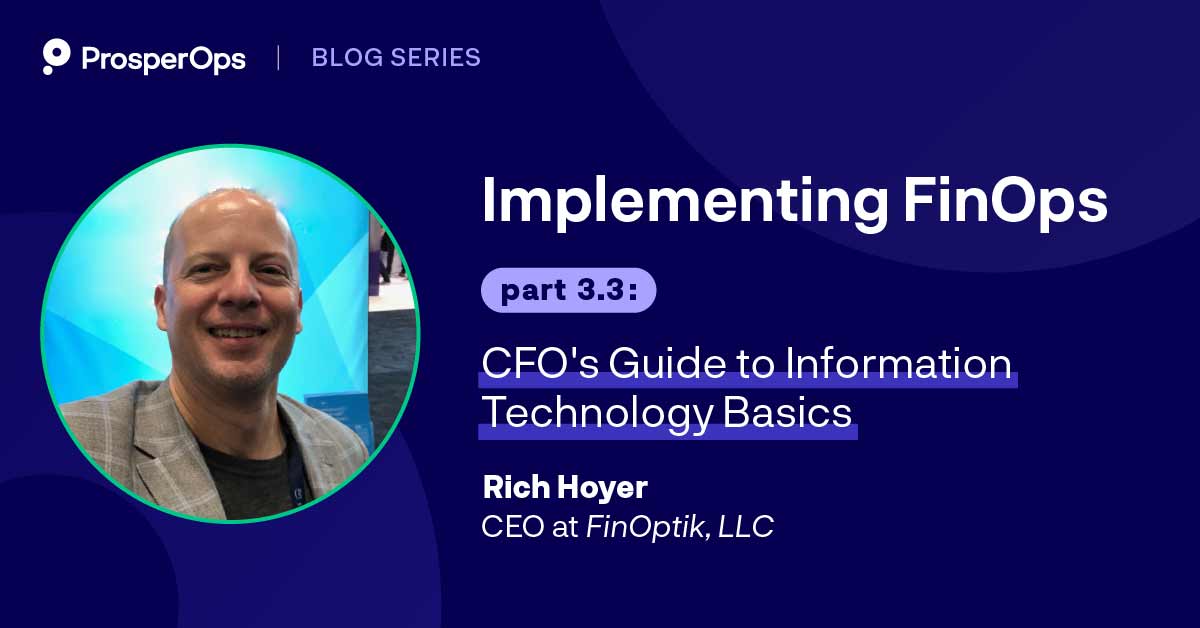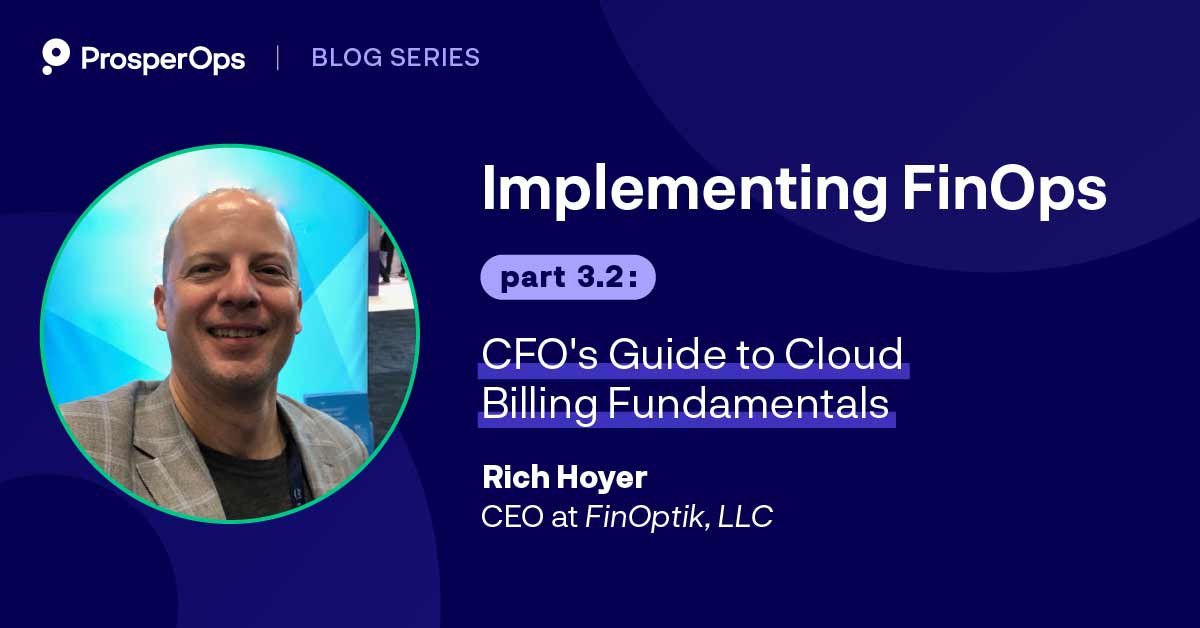Lift and shift is a streamlined approach to cloud migration. The process sidesteps the complexities of altering application architecture or extensive code revisions and paves the way for a fast, efficient migration strategy.
Additionally, it enables an immediate transition from capital expenditures (CapEx) to operational expenditures (OpEx). This change in the financial paradigm can propel your adoption of a hybrid cloud strategy.
But lift and shift isn’t a one-size-fits-all solution. In fact, the strategy could be a financial blunder in certain situations.
In this article, we’ll:
- Examine the advantages and limitations of lift and shift
- Explain alternatives that might work better for your use case
- Introduce Cloud FinOps to help navigate cloud migration’s financial opportunities (and potential pitfalls)
The mechanics of lift and shift
“Lift and shift” is the process of migrating server workloads in their current form from one environment to another—like moving a house without rearranging the furniture.
The migration could involve moving from an on-premises data center, another cloud platform, or a hosted cloud provider service to a new destination such as Amazon Web Services (AWS). During this migration, applications remain unchanged and are not upgraded or transformed into cloud-native technologies.
Historically, virtually any application was a candidate for this approach, barring antiquated or intricately linked on-premises infrastructures. The idea was simple: Transfer the application “as is” without tapping into the rich features and advantages of the cloud.
However, the cloud landscape now offers advanced cloud architectures, boosting developer productivity and presenting competitive pricing models. As a result, popularity has increased, with 48% of respondents currently using cloud services and another 20% planning to adopt cloud services within the following year.
Is lift and shift still a valuable strategy to explore in making financial decisions on cloud spend?
In the contemporary era, lift and shift is popular in two use cases:
- Migrating applications already primed for the cloud, such as VMware workloads, containerized applications, and those built on microservices architecture.
- Serving as an initial modernization step to eventually restructure and optimize a bulky, single-unit application for cloud compatibility.
Like any strategy, lift and shift may include challenges, such as:
- Application dependencies: Certain applications rely heavily on specific on-premises resources or configurations. Transferring them without maintaining these dependencies can cause software malfunctions.
- Bandwidth constraints: The volume of data being moved might exceed the available bandwidth, causing prolonged migration times or potential data losses.
- Service interruptions: According to a 2022 study by Uptime, 60% of downtime events result in losses of $100,000 or more. However, if planned and executed meticulously, the migration process can minimize temporary disruptions affecting the user experience and business continuity.
The benefits of lift and shift
Businesses tackle migrations to accomplish various goals, such as
- Exit a data center or hosting provider ahead of the next contract renewal.
- Move to a provider with more appealing or current technologies and services.
- Add vendor diversity.
While the primary purpose of lift-and-shift is to move digital assets with minimal alterations, its ancillary benefits are substantial.
Lift-and-shift reduces variables in an already complex process
A migration journey involves many tasks, including:
- Reinstalling the application on new cloud hosts
- Migrating data and configurations
- Handling databases
- Adjusting IPs
Many organizations opt for the lift-and-shift approach to minimize additional variables like OS upgrades, application version upgrades, or architectural changes.
Bulk migration is complicated enough, with dozens or hundreds of servers, applications, and databases. Reducing variables amplifies the probability of executing a hitch-free migration, ensuring that complex alterations don’t further complicate the applications.
Cost-efficient in the short-term
According to a 2023 Flexera study, 28% of cloud spend is waste. The initial financial outlay of a lift and shift migration is less than other cloud migration strategies. These immediate cost savings allow companies to streamline their IT infrastructure expenditure.
In addition, businesses reap quick cost savings by transferring workflows without substantial modifications or a complete automation overhaul. For example, AWS reports a 31% average infrastructure cost savings versus on-premises.
Migration process is quick.
Lift and shift stands out as a rapid migration strategy. Its simplicity (due to minimal application changes) ensures a swift transition to the cloud. Such efficiency accelerates the application migration timeline and allows businesses to sustain service offerings with zero (or minimal) downtime.
Instant cloud benefits
The organization immediately benefits once a legacy application is available in the public cloud.
- Cloud features include on-demand scalability, enabling businesses to scale deployments without hefty hardware investments or overprovisioning for peak periods.
- There’s also the lure of elasticity—the capacity to automatically allocate or retract resources based on real-time demand, thereby optimizing costs.
- Additionally, with cloud-based disaster recovery solutions, companies achieve heightened cloud storage and data availability, often coupled with cost savings compared to traditional disaster recovery plans.
Enhanced security
After migration, even legacy applications can integrate with advanced cloud security protocols. Mechanisms include role-based access control, multifactor authentication, and unified security processes across hybrid environments.
The cloud’s security framework acts as a shield, ensuring applications benefit from modern protective measures, enhancing resilience against threats.
The 6 Rs of Cloud Migration
As we mentioned, lift and shift isn’t always the right strategy. Experts have identified six methodologies to simplify financial and practical migration decisions.
Each provides a distinct pathway, serving different needs and objectives. Understanding these strategies will clarify which path best aligns with your organization’s goals.
1. Rehost
Rehosting, often called “lift and shift,” involves relocating an application to another hardware environment without modifying its architecture.
As we’ve discussed, this approach is attractive for its rapidity and lower upfront costs. However, operational costs might be higher in the long run since the application isn’t fine-tuned to leverage the efficiencies of the public cloud.
2. Replatform
Replatforming, sometimes associated with Platform-as-a-Service (PaaS) migration, requires application modifications to harness cloud capabilities. The application remains, but elements are adjusted to optimize performance or exploit cloud features.
This middle-ground approach allows developers to retain specific languages, frameworks, and containers. However, challenges might include framework lock-in or the need for additional capabilities.
3. Repurchase
This strategy involves discarding an existing application and shifting to commercial software as a service (SaaS).
This popular option in the SaaS market is helpful for swiftly adapting to changing business functions. However, companies may encounter issues in digital transformation, such as data inconsistencies, restricted data access, and the financial risk of SaaS vendor lock-in.
4. Refactor
Refactoring requires revising an application to make full use of cloud-native features. This might involve re-architecting the application or introducing elements like microservices, containers, or serverless computing.
Although this method may initially be more labor-intensive and costly, it offers significant long-term benefits, such as enhanced developer productivity, security, resiliency, and better cost optimization.
5. Retire
The retire strategy is straightforward: eliminate parts of the IT portfolio that are no longer necessary.
This strategy produces instant cost savings, reduces clutter, and ensures that only relevant, value-adding applications carry forward into the cloud environment.
6. Retain
Retaining involves keeping applications on your current infrastructure and deciding not to migrate them. Various reasons include the application’s lifecycle stage, its criticality, or simply because it’s not yet the right time for the shift.
The significance of real-time adjustments
As businesses delve deeper into cloud migration, they constantly face dynamic landscapes requiring agility and adaptability. The velocity of change requires a steady hand in managing the financial impact of IT decisions. Here’s why.
Dynamic environments
Cloud migration is a digital transformation where server environments often require profound shifts. The digital terrains may expand, contract, or evolve based on workload, user demands, or infrastructure changes.
The capacity to adapt instantly is crucial. Otherwise, delays or misjudgments could lead to operational inefficiencies, increased costs, or service disruptions.
Coordinating the technology needs of multiple company verticals and stakeholders (while managing costs) can be overwhelming. That’s where Cloud FinOps comes in.
ProsperOps edge
Designed as an Autonomous Discount Management solution for AWS and the Google Cloud Platform (GCP), ProsperOps provides stability during the (sometimes chaotic) application migration process.
Its strength lies in real-time monitoring of the AWS cloud environment, pinpointing savings opportunities, and instantly capitalizing on them.
The ProsperOps model ensures optimal rate optimization even in rapid environmental shifts and reinforces the migration process’s financial efficiency.
By channeling the power of artificial intelligence for IT operations (AIOps), ProsperOps eases the load on both finance and engineering teams, allowing them to seamlessly integrate Cloud FinOps best practices without the overhead of constant manual oversight.
How ProsperOps is changing the lift-and-shift dynamics
The equilibrium between efficiency, cost, and adaptability is critical. ProsperOps is not merely a platform but a game-changer, revolutionizing lift-and-shift dynamics through ProsperOps’ real-time response mechanisms and adaptability.
ProsperOps reacts in real-time as new workloads go online to:
- Adjust the customer’s discount portfolio within moments of engineering changes.
- Observe performance metric norms as instances resize in the days or weeks following the move to the cloud.
- Modify Convertible RIs to match the new instances’ family, size, tenancy, platform, or quantity.
Efficiency in server activation
Traditional teams grapple with executing cloud service provider (CSP) purchases manually, often leading to lags or inaccuracies.
ProsperOps streamlines the process by ensuring coverage to bridge the gap seamlessly between activation and optimization. ProsperOps’ real-time telemetry insights help anticipate and align server activation, ensuring cost-effective utilization without missing a beat.
Adaptive sizing
One of the challenges of post-server activation is recognizing and rectifying sizing inaccuracies. As the business tunes in to the performance metrics post-migration, there may be mismatches in instance sizes.
ProsperOps excels in scaling up to accommodate growing needs or trimming down to avoid resource wastage. It morphs in real-time (hour by hour), reflecting the evolving engineering realities. ProsperOps remains a step ahead, ensuring businesses are always at their optimal performance-cost intersection.
NOTE: It’s important to highlight the distinction between ProsperOps and reserved instances (RI) brokers. While RI brokers offer fixed solutions, ProsperOps thrives on adaptability and can accommodate significant server changes.
ProsperOps maintains DevOps efficiency by introducing innovations like Intelligent Showback for cost allocation to ensure businesses purchase only the AWS or GCP services they need.
ProsperOps optimization algorithms guide companies through lift-and-shift complexities, ensuring they emerge efficient, adaptable, and cost-effective.
Lift and shift faster with ProsperOps
Navigating the dynamic landscape of cloud migration to a cloud platform such as AWS requires agility and adaptability.
ProsperOps rises to this challenge by offering the real-time monitoring and adaptability of Cloud FinOps oversight to help companies achieve peak business outcomes.
Cloud FinOps also fosters cooperation among engineering, financial, and commercial teams, guiding them toward informed expenditure choices. The result is economic efficiency and optimal rate optimization throughout the migration journey.
So don’t just migrate—optimize your transition and ensure you’re always at the peak of performance and cost efficiency.
Ready to explore a migration? Schedule your demo with ProsperOps and experience a smoother cloud journey.




